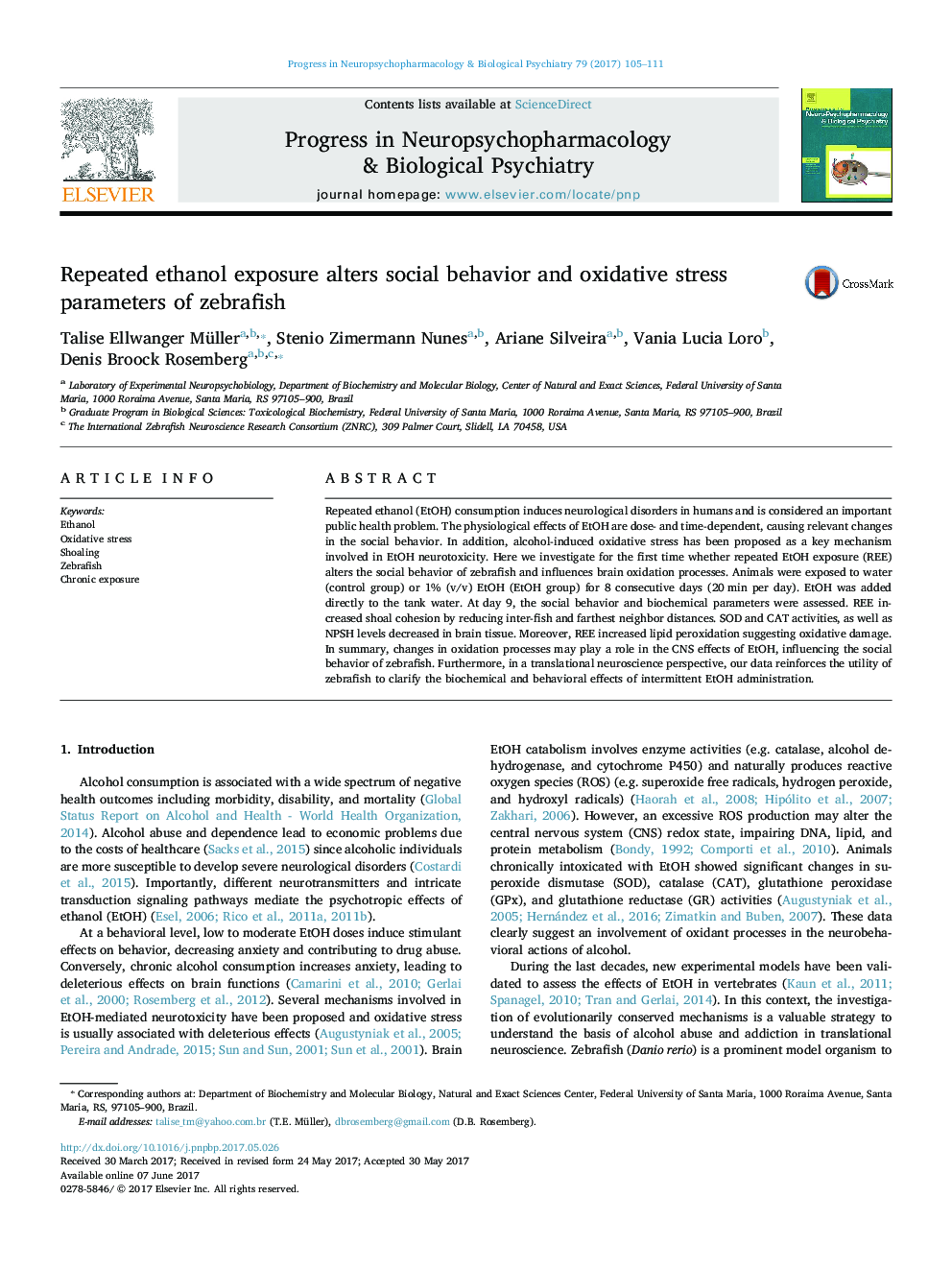| Article ID | Journal | Published Year | Pages | File Type |
|---|---|---|---|---|
| 5557911 | Progress in Neuro-Psychopharmacology and Biological Psychiatry | 2017 | 7 Pages |
â¢Repeated ethanol exposure (REE) increases social behavior of zebrafish.â¢REE does not affect vertical distribution of the zebrafish group.â¢REE decreases enzyme antioxidant defenses in brain tissue of zebrafish.â¢REE induces lipid peroxidation in zebrafish brain.â¢Brain oxidative stress may be associated with changes on social behavior after REE.
Repeated ethanol (EtOH) consumption induces neurological disorders in humans and is considered an important public health problem. The physiological effects of EtOH are dose- and time-dependent, causing relevant changes in the social behavior. In addition, alcohol-induced oxidative stress has been proposed as a key mechanism involved in EtOH neurotoxicity. Here we investigate for the first time whether repeated EtOH exposure (REE) alters the social behavior of zebrafish and influences brain oxidation processes. Animals were exposed to water (control group) or 1% (v/v) EtOH (EtOH group) for 8 consecutive days (20Â min per day). EtOH was added directly to the tank water. At day 9, the social behavior and biochemical parameters were assessed. REE increased shoal cohesion by reducing inter-fish and farthest neighbor distances. SOD and CAT activities, as well as NPSH levels decreased in brain tissue. Moreover, REE increased lipid peroxidation suggesting oxidative damage. In summary, changes in oxidation processes may play a role in the CNS effects of EtOH, influencing the social behavior of zebrafish. Furthermore, in a translational neuroscience perspective, our data reinforces the utility of zebrafish to clarify the biochemical and behavioral effects of intermittent EtOH administration.
